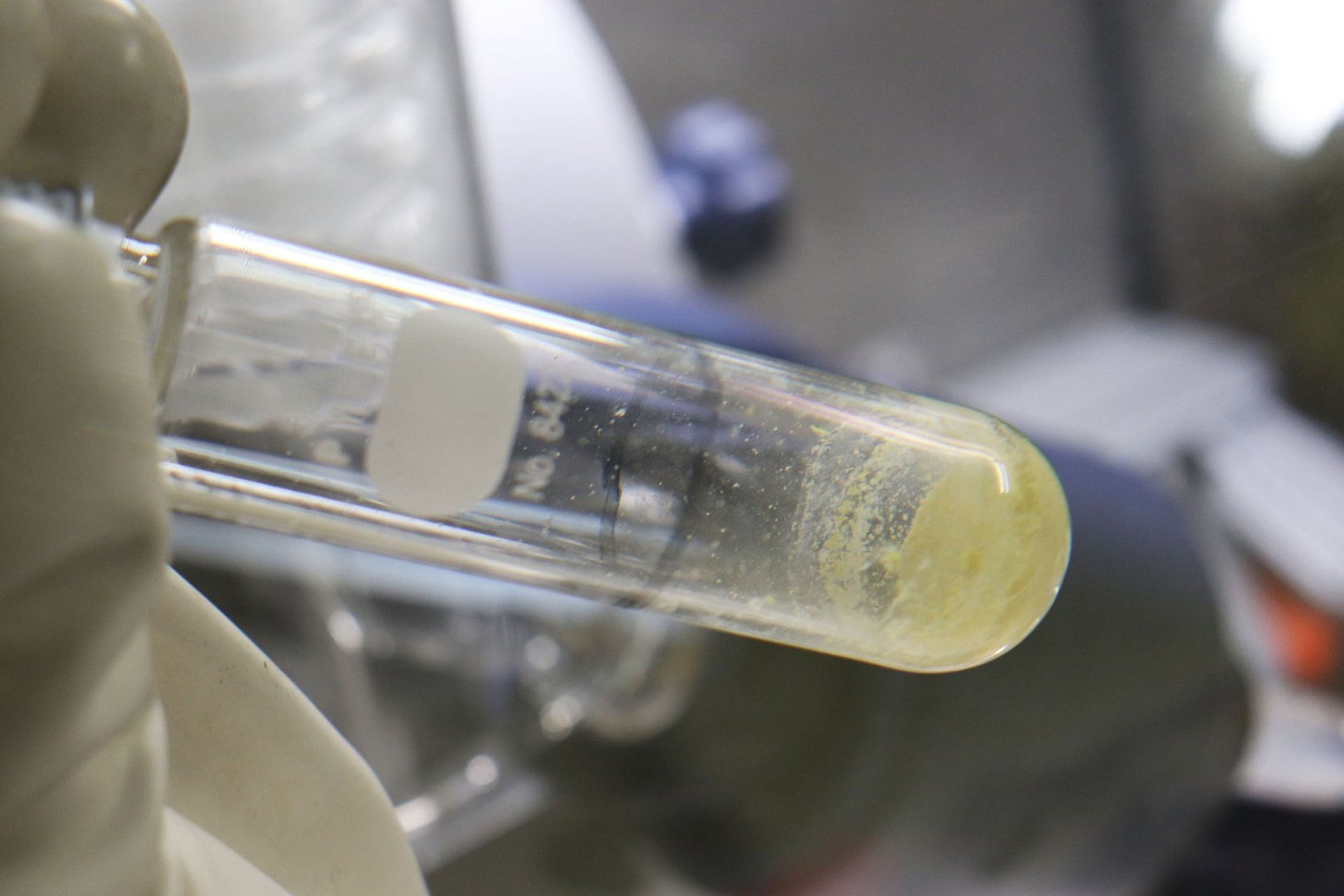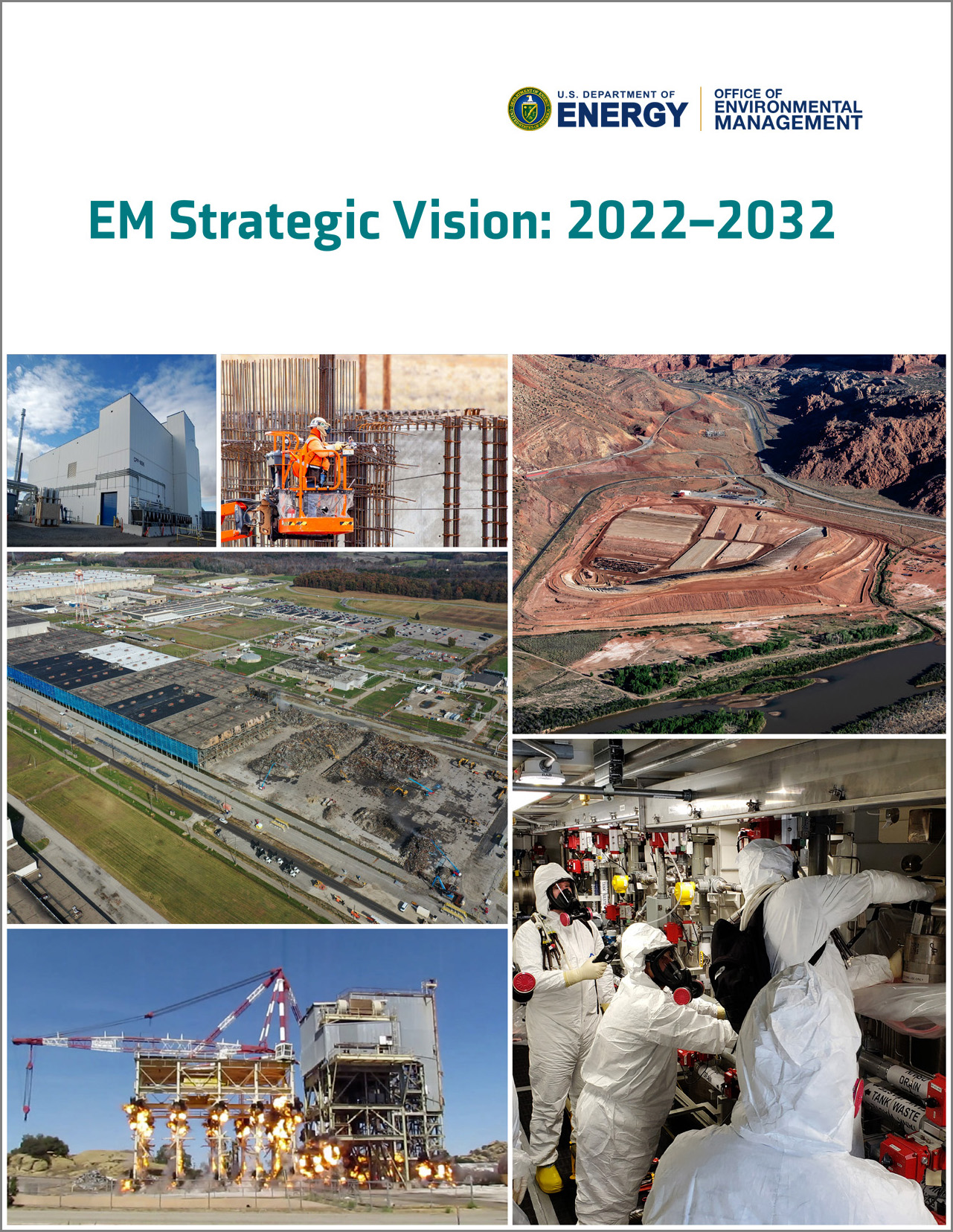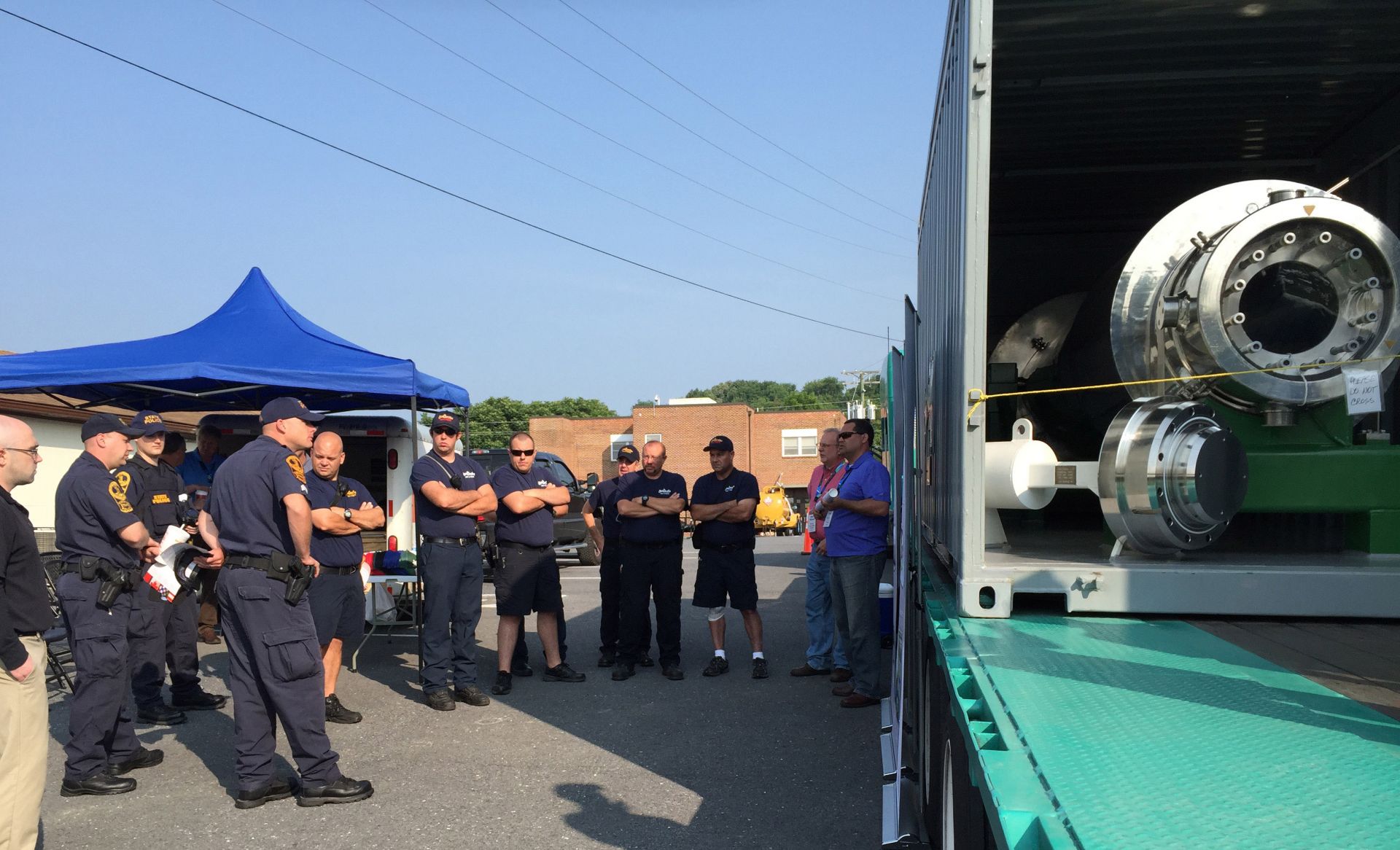UCOR workers remove waste from the Alpha-2 building at the Y-12 National Security Complex in Oak Ridge. (Photo: DOE)
The Department of Energy recently awarded $24.7 million to Oak Ridge cleanup contractor UCOR for its work at the Oak Ridge site in Tennessee from April 2021 through October 2021, amounting to 98 percent of the available fee for the evaluation period.
The DOE and a contractor recently succeeded in disposing of Oak Ridge’s low-activity U-233, but not before recovering Th-229 from the material.
A vial containing Th-299 extracted from uranyl nitrate.
This past October, the Department of Energy’s Oak Ridge Office of Environmental Management (OREM) and its contractor Isotek successfully completed processing and disposing the low-dose inventory of uranium-233 stored at Oak Ridge National Laboratory (ORNL), ending a two-year effort that has eliminated a portion of the site’s legacy nuclear material and provided rare nuclear isotopes for next-generation cancer treatment research.
Workers construct a new ventilation system's filter building last year at WIPP. (Photo: DOE)
Without a plan for addressing issues in completing construction projects at the Waste Isolation Pilot Plant in New Mexico, the Department of Energy cannot ensure that further cost increases and schedule delays will not continue, according to a report by the Government Accountability Office. In particular, the GAO said, the DOE has not developed a corrective action plan to address root causes identified for the rising cost and the delay in building a new ventilation system at the transuranic waste repository.
Bulk Processing Unit at the Perma-Fix Northwest waste treatment facility. (Photo: Perma-Fix)
Westinghouse Electric Company and nuclear waste management company Perma-Fix Environmental Services plan to jointly develop a state-of-the-art advanced materials treatment facility in the United Kingdom. During the 2022 Waste Management Symposia, held last week in Phoenix, Ariz., the two companies signed a nonbinding agreement to cooperate on a facility that will provide low-level radioactive waste treatment services to the European market.
An artist’s rendering of the K East Reactor safe-storage enclosure. (Photo: DOE)
Preparations are being made to enclose, or “cocoon,” the K East Reactor, the seventh of nine former reactors at the Department of Energy’s Hanford Site. The cocooning project is expected to be completed by the end of the year.
Watch this video for more on the project.
Spent nuclear fuel handlers move the last ATR fuel to an awaiting cask in the CPP-666 basin. (Photo: DOE)
The last spent nuclear fuel elements from Idaho National Laboratory’s Advanced Test Reactor (ATR) have been retrieved from a water-filled storage basin and transferred to a nearby dry-storage facility in accordance with a 1995 agreement with the State of Idaho, the Department of Energy’s Office of Environmental Management (EM) announced this week.
A rendering of Canadian Nuclear Laboratories’ proposed Near Surface Disposal Facility. (Image: CNL)
Canadian Nuclear Laboratories (CNL) is asking its stakeholders (members of the public, industry, elected officials, and employees) to support a proposal to construct the Near Surface Disposal Facility (NSDF) to dispose of legacy radioactive waste at the Chalk River Laboratories in Ontario.
A screen shot of a YouTube video of the DOE’s U-233 Initial Processing Campaign at Oak Ridge National Laboratory.
Isotek, the Department of Energy contractor responsible for overseeing the inventory of uranium-233 at Oak Ridge National Laboratory and preparing it for removal from the site, said it plans to resume preparations for processing high-dose U-233 in March. The company was forced to suspend its operational readiness review of the Initial Processing Campaign at Oak Ridge in January due to issues related to COVID-19, as well as difficulties operating in colder temperatures.
As part of a nonproliferation agreement, Canada and the U.S. undertook a multi-year campaign to ship liquid high-enriched uranium material from Chalk River to Savannah River.
State troopers and first responders at a TRM roadshow stop in Virginia. The display LWT cask can be seen at the far right in its shipping container. (Photos courtesy of DOE/NNSA)
In March 2012, during the Nuclear Security Summit in Seoul, South Korea, the governments of Canada and the United States committed to work cooperatively to repatriate approximately 6,000 gallons of high-enriched uranyl nitrate liquid (HEUNL) target residue material (TRM) stored at the Chalk River Laboratories in Ontario to the U.S. Department of Energy’s Savannah River Site in South Carolina. The announcement was part of a larger agreement between the two countries to reduce proliferation risks by consolidating high-enriched uranium at a smaller number of secure locations.
The IWTU liquid nitrogen storage system at the DOE’s Idaho National Laboratory Site. (Photo: DOE)
The Department of Energy’s Office of Environmental Management (EM) stated on February 22 that its Idaho National Laboratory Site contractor is operating the final test run of the Integrated Waste Treatment Unit (IWTU), running waste simulant through the facility to ensure the plant’s performance and personnel proficiency for upcoming radiological operations.
The NWMO said its Property Value Protection program satisfies one of the guiding principles set out to support local decision-making about Canada’s repository project. (Photo: NWMO)
Canada’s Nuclear Waste Management Organization (NWMO) said in a February news release that it has developed a program to protect the value of properties near the potential site in South Bruce, Ontario, for the country’s deep geological repository for used nuclear fuel. Along with Ignace in western Ontario, South Bruce is one of the two potential locations the NWMO has identified for hosting a deep geological repository.
According to the NWMO, the Property Value Protection program reflects a responsible commitment to the community and addresses questions the organization heard from residents about whether property values will be affected if South Bruce is selected for the repository. The program, which was developed in consultation with the community of South Bruce, will compensate residents if the sale of their properties is negatively affected by the project.
Holtec’s HI-STAR 190 spent nuclear fuel transport cask. India’s NPCIL ordered the company’s smaller HI-STAR 149 cask for use at its Kudankulam plant. (Photo: Holtec)
Holtec International announced yesterday that its India-based subsidiary, Holtec Asia, has received an order from Mumbai-based Nuclear Power Corporation of India Limited (NPCIL) for two HI-STAR 149 transport casks to serve the away-from-reactor storage facility for the Kudankulam nuclear power plant.
The interior of the Submarine 1st Generation Westinghouse prototype, located at the Naval Reactors Facility on the INL site, circa mid-1950s. (Photo: DOE)
The Department of Energy’s Office of Environmental Management (EM) announced on February 10 that it is set to deactivate and demolish the prototype for the reactor used for the USS Nautilus, the world’s first operational nuclear-powered submarine and the first submarine to complete a submerged transit of the North Pole.
A rendering of Holtec International's interim spent fuel repository. (Image: Holtec International)
An article published on the Carlsbad Current-Argus news site on February 5 presents the wide gap between lawmakers in New Mexico on either side of the issue of temporary storage of spent nuclear fuel in the state.
The article noted that two identical bills—Senate Bill 54 and House Bill 127, which advanced in legislative committees last week—would block a spent fuel storage facility in New Mexico by prohibiting state agencies from issuing permits for such a facility.






 The Department of Energy’s Office of Environmental Management (EM) has issued EM Strategic Vision 2022-2032, a blueprint for planned nuclear-related cleanup efforts over the next decade. The document outlines environmental cleanup priorities for 2022–2032, focusing on safety, innovation, and improved performance.
The Department of Energy’s Office of Environmental Management (EM) has issued EM Strategic Vision 2022-2032, a blueprint for planned nuclear-related cleanup efforts over the next decade. The document outlines environmental cleanup priorities for 2022–2032, focusing on safety, innovation, and improved performance.











